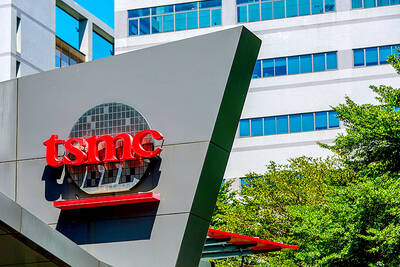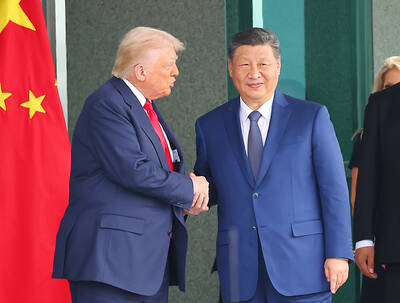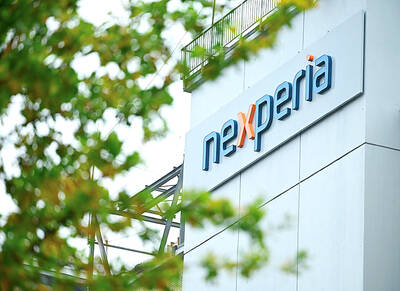General Motors Co (GM) has bought out the Softbank Vision Fund’s stake in self-driving vehicle start-up Cruise LLC for US$2.1 billion, ending the Japanese investment firm’s involvement in the business and giving the Detroit, Michigan, automaker 80 percent ownership.
GM on Friday said it would invest another US$1.35 billion in Cruise, which makes up for the amount Softbank had pledged to invest in the start-up once the company deploys vehicles in a planned ride-sharing business.
The deal consolidates GM’s ownership and control over Cruise, and reverses a capital diversification plan by former Cruise CEO Dan Ammann, who was fired in December last year after pushing for an initial public offering (IPO).

Photo: Bloomberg
GM CEO Mary Barra and Cruise founder Kyle Vogt, who replaced Ammann as CEO, have said an IPO is not in the offing at this time and would likely not be any time soon.
“Why not just go public? It’s a major distraction, especially right now,” Vogt wrote on Twitter after GM announced the deal. “Cruise just launched a driverless ride hail service in SF [San Francisco], and we want 100 percent of our energy focused on scaling up and delighting our customers.”
For Softbank, the sale marks a nice return on a nearly four-year investment.
The fund initially committed US$2.25 billion for an 11 percent stake in Cruise in May 2018. The first US$900 million was to come at once, with US$1.35 billion payable once vehicles were ready for commercialization.
SoftBank subsequently contributed about US$300 million in additional funding.
When Cruise started offering free rides to the public without a safety driver in late January, it triggered Softbank’s second investment requirement, GM said on its fourth-quarter earnings call.
Softbank did not make the investment, and GM bought out its stake.
The Vision Fund has seen the value of its technology investments plunge by US$25 billion, and the company is heavily in debt.
However, the investment fund sold its Cruise stake for more than double its initial investment.
A Softbank spokesman declined to comment.
Cruise has other partners that own a combined 20 percent stake.
They include Honda Motor Co, which is helping GM develop the Cruise Origin autonomous vehicle, Microsoft Corp, Walmart Inc and T. Rowe Price Group Inc.
In lieu of an IPO, GM also set up a plan to allow Cruise employees to cash out of their stakes.
The automaker launched what it calls the Recurring Liquidity Opportunity (RLO) program, which would pay existing employees for unlisted shares they want to sell at various times throughout the year.
“Public co’s typically have the upper hand vs private co’s when making offers to candidates, since the equity part of an offer is liquid,” Vogt wrote on Twitter. “But being a public co can be a pain. So today we introduced Cruise’s RLO, our solution.”
GM said in its filing that the total equity awards held by employees are worth US$4 billion and that it expects to set aside US$1 billion to US$1.5 billion this year for the employee fund.
Ammann had said in internal memos that Cruise needed an IPO to lure and retain talent.
However, Barra wants to keep Cruise in house — at least until it reaches further milestones with its self-driving technology and develops a business that brings in revenue, people familiar with the matter said in December last year.

RUN IT BACK: A succesful first project working with hyperscalers to design chips encouraged MediaTek to start a second project, aiming to hit stride in 2028 MediaTek Inc (聯發科), the world’s biggest smartphone chip supplier, yesterday said it is engaging a second hyperscaler to help design artificial intelligence (AI) accelerators used in data centers following a similar project expected to generate revenue streams soon. The first AI accelerator project is to bring in US$1 billion revenue next year and several billion US dollars more in 2027, MediaTek chief executive officer Rick Tsai (蔡力行) told a virtual investor conference yesterday. The second AI accelerator project is expected to contribute to revenue beginning in 2028, Tsai said. MediaTek yesterday raised its revenue forecast for the global AI accelerator used

Taiwan Semiconductor Manufacturing Co (TSMC, 台積電) has secured three construction permits for its plan to build a state-of-the-art A14 wafer fab in Taichung, and is likely to start construction soon, the Central Taiwan Science Park Bureau said yesterday. Speaking with CNA, Wang Chun-chieh (王俊傑), deputy director general of the science park bureau, said the world’s largest contract chipmaker has received three construction permits — one to build a fab to roll out sophisticated chips, another to build a central utility plant to provide water and electricity for the facility and the other to build three office buildings. With the three permits, TSMC

TEMPORARY TRUCE: China has made concessions to ease rare earth trade controls, among others, while Washington holds fire on a 100% tariff on all Chinese goods China is effectively suspending implementation of additional export controls on rare earth metals and terminating investigations targeting US companies in the semiconductor supply chain, the White House announced. The White House on Saturday issued a fact sheet outlining some details of the trade pact agreed to earlier in the week by US President Donald Trump and Chinese President Xi Jinping (習近平) that aimed to ease tensions between the world’s two largest economies. Under the deal, China is to issue general licenses valid for exports of rare earths, gallium, germanium, antimony and graphite “for the benefit of US end users and their suppliers

Dutch chipmaker Nexperia BV’s China unit yesterday said that it had established sufficient inventories of finished goods and works-in-progress, and that its supply chain remained secure and stable after its parent halted wafer supplies. The Dutch company suspended supplies of wafers to its Chinese assembly plant a week ago, calling it “a direct consequence of the local management’s recent failure to comply with the agreed contractual payment terms,” Reuters reported on Friday last week. Its China unit called Nexperia’s suspension “unilateral” and “extremely irresponsible,” adding that the Dutch parent’s claim about contractual payment was “misleading and highly deceptive,” according to a statement